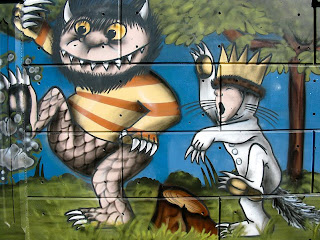Will 48fps Movies Catch On?
My beloved and I just saw The Hobbit: An Unexpected Journey last night. I wanted to see it in 3D, at 48 frames per second to see what it was like. Turns out that not every cinema can display it this way. We had to travel an hour by bus to get to one. If you're interested in seeing it at a high frame rate, you can use this website to find a theater:
http://www.48fpsmovies.com/48-fps-theater-list/
Normal movies use 24 frames per second-- what that means is that what appears to be a moving picture is actually a kind of flip book in which each image is presented to you for 1/24th of a second. The eye interpretes this as motion. With 48 frames per second, it looks a lot more real-- and many say that's the problem.
People complain that it looks too real, or that it looks like it was shot on video. So will 48fps be a flash in the pan, or will it become the industry standard.
I'm betting that it, or an even higher frame rate, will become the industry standard. Here's why.
I'm guessing that people's love for 24fps is because they simply associate it with movies, and they associate a higher frame rate with cheap home videos. What I do not think is that 24fps has some special quality that is objectively better for movies. I might be wrong about this, but this is my suspicion. I think that people who have grown up with regular movies might get used to 48fps, but then again they might not. Or some will and some won't.
Personally, I think that it sometimes looks terrible, and sometimes looks stunning. I liked it, not loved it, in The Hobbit, but I think I have just those associations I'm talking about. I definitely hate it watching movies on TV: what's happening here is that the TV is created frames to interpolate between the ones it's getting! If you're wondering why movies look terrible on your new TV, that's why. Here's how to turn it off:
http://prolost.com/blog/2011/3/28/your-new-tv-ruins-movies.html
However, the next generation, the next wave of kids, will see some movies in 24 and some in 48fps. And I bet their reaction will be simply that the picture is better. By the time they are adults, there will be no more demand for 24fps films.
Historically, the more realistic, more detailed, more information-rich movie technology has always prevailed. It happened when movies got sound, when movies went to color, and it seems that 3D is here to stay as well. And I bet at every one of these stages there were people who claimed that the old way was better.
I think it also helps that The Hobbit: An Unexpected Journey is a huge success. When people are thinking of getting an e-reader, I tell them to get a book they know they'll love as their first book--maybe the latest John Grisham or some other page-turner. What happens is that you start reading and the medium mostly melts away. You forget it's a Kindle, you're just in the story. By the end of it, you think "the Kindle's not so bad." Likewise for this movie. It's gorgeous; it's really good, if a bit slow at times. If the first new wave of 48fps movies were terrible, it might slow down the adoption.
So even though I think it looks a bit un-movielike, I think it will catch on. However, I didn't love it so much that I'd be willing to bus for an hour to see the second movie this way.
Pictured: A promotional photo from the film, depicting the dwarves.


Comments